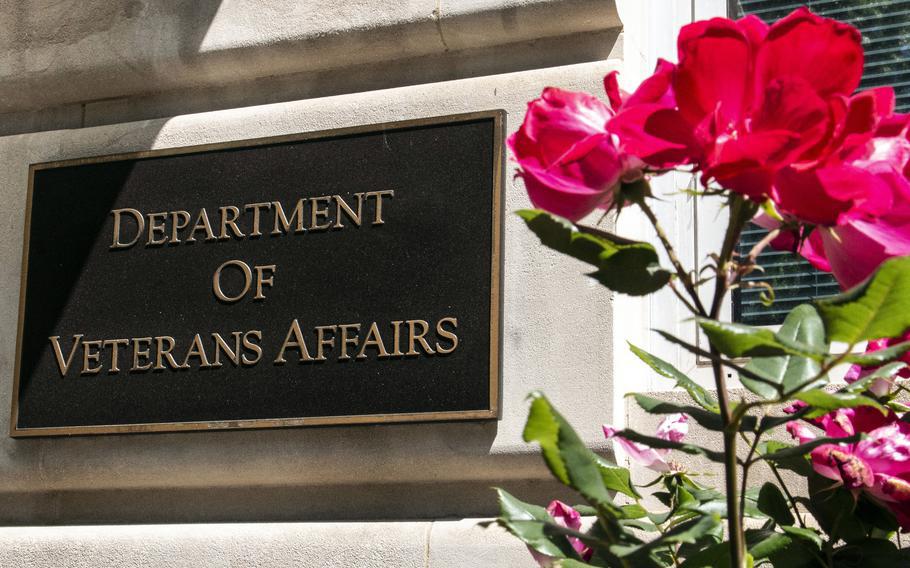
Lawmakers questioned why the Department of Veterans Affairs is dropping some non-VA regional medical centers in New York, Connecticut and Michigan from its scheduling system for community care. The VA said it was not getting the level of participation from doctors that it anticipated from the medical centers in those areas. (Statrs and Stripes)
WASHINGTON — A recent decision by the Department of Veterans Affairs to reduce non-VA medical appointments at regional medical centers in three states came under harsh questioning Thursday from House lawmakers.
Rep. Matt Rosendale, R-Mont., asked VA leaders why an online scheduling platform for making non-VA appointments is being turned off at some regional medical centers in Michigan, New York and Connecticut.
“This seems like a shortsighted decision that will have lasting damage,” he said during a House hearing to look at VA’s efforts to modernize its online appointment system.
The VA plans to drop its scheduling platform at medical centers in Ann Arbor and Iron Mountain in Michigan, Hudson Valley in New York and West Haven in Connecticut.
Rosendale, chairman of the House Veterans’ Affairs Committee’s subpanel on technology modernization, questioned whether the decision to drop the scheduling platform is related to opposition by some VA leaders to expanding non-VA medical care for veterans.
Some VA leaders have raised concerns that medical services provided by non-VA doctors are shifting resources from VA health care.
“I have serious concerns that VA leaders intentionally are undermining this project to make veterans health care slower and more difficult out of political hostility toward community care. I hope that is not the case,” Rosendale said.
Rep. Sheila Cherfilus-McCormick, D-Fla., added: “Appointment scheduling is at the foundation of veteran access to care.”
The VA chose to drop certain regional medical centers as community providers because they lacked a high participation of doctors, said Mark Hausman, executive director for integrated access at the Veterans Health Administration.
“The decision was around not having adequate numbers of providers participating,” Hausman said. “We would prefer to focus efforts on adding medical centers with markets of higher potential.”
He said the VA will continue with community referrals for veterans at 12 other non-VA regional medical centers.
There are plans to add at least five more high-volume non-VA medical practices in fiscal 2025, Hausman said. He did not identify the locations of those medical centers.
“The strategy we are working on next year will allow us to focus on key areas of markets that we think offer the highest potential for provider participation,” Hausman said.
But Rosendale said he did not hear that participation was a problem. For example, he said there are 300 doctors in Hudson Valley, N.Y., that have joined the VA network, which requires VA access to a physician’s online schedule.
Veterans can use non-VA health care for military service-connected illnesses and injuries when appointments are not readily available at a VA clinic or hospital in their community. Based on the veteran’s preferences and the health care provider’s schedule, a VA staff member makes the appointment for the veteran. Doctors and medical facilities also must be integrated into the VA’s scheduling system to participate.
Cherri Waters, executive director for health portfolio in the VA Office of Information and Technology, said the VA’s goal is to develop an integrated appointment platform that allows schedulers to move with ease between the VA and the community network of non-VA doctors.
Waters said the VA is hoping to have an updated scheduling system fully operational by February 2025. Under the new system, schedulers will more easily see appointment availability across multiple VA sites for telehealth and in-person visits.
Plans also are to layer the scheduling system across veterans electronic health records.
Cherfilus-McCormick said it is important for the VA to implement an updated scheduling system that lets veterans access the care that they need in a timely manner.
“VA has a long history of IT modernization efforts that suffer from a lack of effective VA management,” she said.
Cherfilus-McCormick asked how upgrades will be different as the scheduling system is modernized.
Waters said the VA is taking an incremental approach that allows the agency to more easily identify and fix bugs than when applying several changes at once.
“This is how we can assure success at every step along the way,” she said.